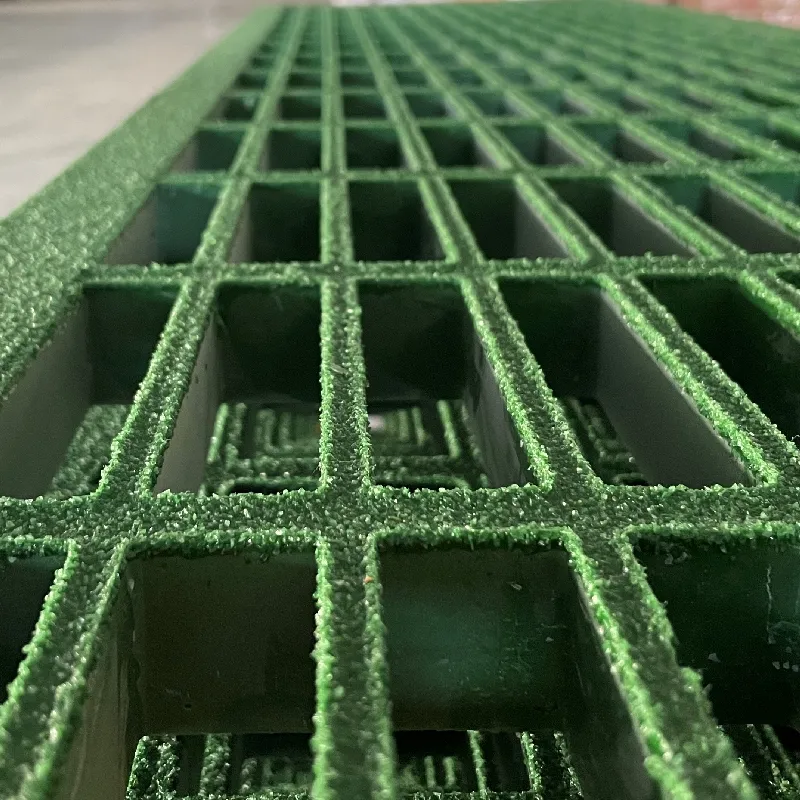loading...
- No. 9, Xingyuan South Street, Dongwaihuan Road, Zaoqiang County, Hengshui, Hebei, China
- admin@zjcomposites.com
- +86 15097380338
- Welcome to visit our website!
cutting frp grating
Understanding Cutting FRP Grating Techniques and Benefits
Fiberglass Reinforced Plastic (FRP) grating is an engineered product widely used in various industrial, commercial, and architectural applications. Known for its high strength-to-weight ratio, resistance to corrosion, and non-slip surface, FRP grating is a preferred choice in environments that demand durability and safety. However, to maximize its potential, understanding how to properly cut and modify FRP grating is crucial. This article explores the techniques used for cutting FRP grating, along with the benefits it brings to different industries.
What is FRP Grating?
FRP grating is made from a composite material that combines fiberglass with a polymer resin. This unique combination results in a product that is not only strong but also lightweight and easy to handle. FRP grating is commonly used in areas like walkways, platforms, stair treads, and even architectural features due to its anti-corrosive properties and low maintenance requirements. Moreover, it can be produced in various shapes, sizes, colors, and structural support systems, making it versatile for multiple applications.
Techniques for Cutting FRP Grating
Cutting FRP grating requires specialized techniques and tools to ensure a clean finish and maintain the structural integrity of the material. Here are some commonly used methods
1. Power Saws Circular saws and jigsaws are the most common tools for cutting FRP grating. Using a diamond-tipped blade or a carbide-tipped blade is recommended, as these blades can easily handle the tough material without causing excessive damage or fraying to the edges. It's essential to operate these power saws at moderate speeds to prevent melting the resin due to heat buildup.
2. Hand Tools In situations where power tools are impractical, hand tools such as a hacksaw or a fine-toothed saw can be used. This method is generally more labor-intensive and time-consuming but may be suitable for smaller cuts or adjustments.
3. Water Jet Cutting For precision cuts and complex shapes, water jet cutting is an excellent option. This technique uses high-pressure water mixed with abrasives to cut through the material without producing heat, thus preserving the properties of the FRP. While this method is more expensive, it provides high-quality results and minimizes the risk of chipping or damaging the grating.
cutting frp grating

4. Mechanical Cutting CNC (Computer Numerical Control) machines can also be employed for cutting FRP grating. This technology allows for precise, automated cuts that can be customized according to specific project requirements. CNC machines can handle large sheets of FRP with ease and replicate designs consistently.
Benefits of Cutting FRP Grating
The ability to cut FRP grating effectively presents numerous benefits across various applications
1. Customization One of the main advantages of cutting FRP grating is the ability to customize it to meet specific project requirements. By tailoring the size and shape of the grating, users can enhance fit and functionality, ensuring optimal performance in their intended application.
2. Cost-Effective Custom cutting prevents the need for extensive adjustments or replacements, ultimately reducing costs associated with manufacturing or acquiring new grating. It allows for efficient installation by ensuring that the grating fits perfectly in a designated space.
3. Improved Safety Properly cut FRP grating can enhance safety in environments prone to slips and falls. The ability to create specific widths or configurations of grating can ensure a secure walking surface, minimizing hazards in industrial and commercial settings.
4. Durability and Longevity FRP grating is inherently resistant to corrosion and chemical damage. Cutting it correctly ensures that the grating retains its structural integrity, which contributes to its overall longevity.
Conclusion
Cutting FRP grating is an essential skill for anyone involved in the installation or maintenance of this versatile composite material. By utilizing appropriate cutting techniques and tools, users can ensure that their FRP grating meets the demands of various applications while maximizing safety and efficacy. The ability to customize and adapt FRP grating further enhances its appeal, making it an essential component in modern construction and industrial applications. As industries continue to evolve, the importance of effective material handling and customization, like that of FRP grating, cannot be overstated.
-
Transform Your Spaces with FRP Grating SolutionsNewsNov.04,2024
-
The Versatility and Strength of FRP RodsNewsNov.04,2024
-
The Excellence of Fiberglass Water TanksNewsNov.04,2024
-
The Benefits of FRP Grating for Your ProjectsNewsNov.04,2024
-
Elevate Your Efficiency with FRP Pressure VesselsNewsNov.04,2024
-
Welcome to the World of FRP Pressure VesselsNewsOct.12,2024
-
Unveiling the Future of Filtration: Why FRP Filter Vessels are a Game ChangerNewsOct.12,2024
